

Ulrike Ottinger
Born: June 6, 1942
in Konstanz, Germany
in Konstanz, Germany
Ulrike Ottinger is a German filmmaker and photographer.
Movies for Ulrike Ottinger...
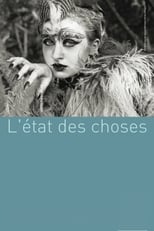
Title: Les réalisatrices contemporaines: l'état des choses
Character: Self
Released: July 18, 2016
Type: Movie
Right at the heart of the debates on the discrimination of women in the film industry, this documentary raises questions, while offering a voice to women and their cinema. Catherine Breillat, Claire Denis, Mira Nair, Margarethe Von Trotta, Ulrike Ottinger, Micheline Lanctot, Rakshnan Bani-Etemad, María Novaro but also the names of the less visible directors of the general public. Joining the filmmakers are the voices and comments of producers, film specialists and archivists through whom our images are meticulously preserved.

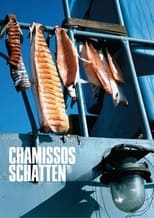
Title: Chamisso’s Shadow
Character: Herself (voice)
Released: February 12, 2016
Type: Movie
A Journey to the Bering Sea in three chapters by Ulrike Ottinger.

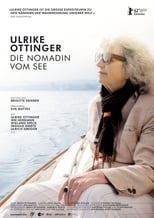
Title: Ulrike Ottinger: Nomad from the Lake
Character: Herself
Released: February 15, 2012
Type: Movie
Ulrike Ottinger is an exceptional filmmaker and artist. Her cinematic universe has influenced entire generations. As a young woman, she brought the international art world to the sleepy town of Konstanz. It all began on the shores of Lake Constance where Ulrike Ottinger was born and where she still often spends time. Filmmaker Brigitte Kramer chose to begin her film at Lake Constance since she too shares Ottinger’s birthplace and a great love of these waters. This is also where the filmmaker’s own artistic development began, not least as a result of her encounter with Ottinger and her work. Other fellow travellers and friends appearing in this film include art historian Katharina Sykora, collector and curator Ingvild Goetz, film historian Ulrich Gregor, philosopher Bernd Scherer and actor Irm Hermann. Using this common ground as a starting point for an exploration of Ottinger’s substantial oeuvre, this documentary provides a keen insight into the artist’s life and work.


Title: Dubai Winter Diary VI: Light and Reflections
Character: Self
Released: December 14, 2011
Type: Movie
Gérard Courant's "Filmed Diary" of December 14, 2011, produced in Dubai (United Arab Emirates). Between December 7 and 15, 2011, Gérard Courant was invited by the Dubai International Film Festival, in the United Arab Emirates. It was an opportunity for him to film many "Cinematons" of personalities from the Arab world and to continue his "Film Notebooks" from which he brought back 7 episodes.

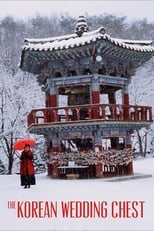
Title: The Korean Wedding Chest
Character: Narrator
Released: October 1, 2009
Type: Movie
Ulrike Ottinger’s provocative mélange of ethnography, stunning tableaux and baroque vignettes was inspired by what she calls the “well-stocked miracle” of Korean wedding chests, assembled according to time-honored customs. This exploration of love and marriage in South Korea looks closely at ancient and present-day rituals, revealing what is old in the new and new in the old. Her inquiry leads us from shamans, temples and priests, to the enchanted maze of 21st-century Seoul, where vendors of medicinal herbs co-exist with high-tech beauty salons for wedding couples and secular marriage palaces. Using film much like a canvas, Ottinger creates a modern fairytale flush with mythological heroes, traditional rites, ancestral symbolism, dreams of eternal love, and a whole lot of Western kitsch. One of her most acclaimed documentaries, it captures the amazing phenomenon of new mega-cities and their contradictory societies caught in a balancing act.


Title: The Making Of “Superbia”
Released: September 5, 1986
Type: Movie
Superbia states "I am pride. The proud root of all evil. I am Superbia, the first of the seven capital sins. I am always the first. The tree of wickedness grows out of me. My six daughters are its forbidden fruit: gluttony, laziness, greed, anger, envy, lust." In this grotesque procession of a giant haystack with characters representing pride, edited with images of real military parades, Ulrike Ottinger depicts a subtle allegory of human vanities.

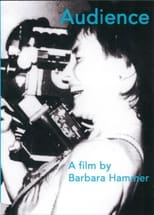
Title: Audience
Character: Self
Released: January 1, 1982
Type: Movie
Barbara Hammer’s Audience is a fascinating deep cut from the director’s prodigious filmography. Relatively raw in its design, this 16mm diary of audience reactions at retrospectives of Hammer’s work in San Francisco, London, Toronto, and Montreal in the early 1980s bears none of the distinctive visual flourishes and essayistic form one usually finds in her filmmaking. Today, Audience serves as an invaluable historical archive, providing quick but complex portraits of lesbian scenes in different cities and countries: the San Francisco women are bold and raucous, treating Hammer like a celebrity; the London crowd more reserved and tentative; the Canadians politely critical after initial hesitation. It also functions as a testament to the power of Hammer herself as a figure of lesbian culture, showing how fully she engages audiences to incite new forms of discourse about representation.


Title: Cinématon XI
Character: N°104
Released: November 7, 1981
Type: Movie
Reel 11 of Gérard Courant's on-going Cinematon series.

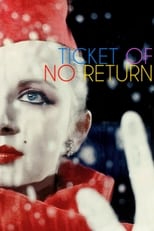
Title: Ticket of No Return
Character: Narrator
Released: October 27, 1979
Type: Movie
A sartorially resplendent woman of few words arrives in Berlin with plans to live out the rest of her days as a drunkard.


Title: Cinématon
Character: N°104
Released: December 20, 1978
Type: Movie
Cinématon is a 156-hour long experimental film by French director Gérard Courant. It was the longest film ever released until 2011. Composed over 36 years from 1978 until 2006, it consists of a series of over 2,821 silent vignettes (cinématons), each 3 minutes and 25 seconds long, of various celebrities, artists, journalists and friends of the director, each doing whatever they want for the allotted time. Subjects of the film include directors Barbet Schroeder, Nagisa Oshima, Volker Schlöndorff, Ken Loach, Benjamin Cuq, Youssef Chahine, Wim Wenders, Joseph Losey, Jean-Luc Godard, Samuel Fuller and Terry Gilliam, chess grandmaster Joël Lautier, and actors Roberto Benigni, Stéphane Audran, Julie Delpy and Lesley Chatterley. Gilliam is featured eating a 100-franc note, while Fuller smokes a cigar. Courant's favourite subject was a 7-month-old baby. The film was screened in its then-entirety in Avignon in November 2009 and was screened in Redondo Beach, CA on April 9, 2010.

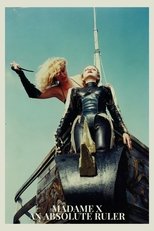
Title: Madame X - An Absolute Ruler
Character: Orlando
Released: February 7, 1978
Type: Movie
The notorious pirate ruler Madame X places a print ad, calling on women to escape their boring lives and promising "gold, love and adventure" to all who come aboard her ship, the Orlando. A motley crew including a housewife, diva and artist (played by Yvonne Rainer) embark on a quest for self-transformation, which quickly heads towards destruction as they are subjected to Madame X's sadistic, erotic escapades.

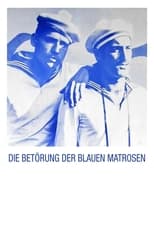
Title: The Enchantment of the Blue Sailors
Character: Nymphe der deutschen Romantik
Released: October 24, 1975
Type: Movie
In collage sequences, the surrogate of synthetic sensuality takes form and seduces the sailors in the guise of a Hawaiian girl. In ritual punctuation, she distributes deaths which seemingly only the hardy siren Fatality can survive.

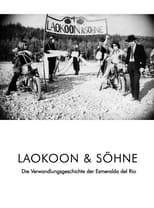
Title: Laocoon & Sons: The Story of the Transformation of Esmeralda del Rio
Character: Kakalia Katzen
Released: March 27, 1972
Type: Movie
Once upon a time there was a country known by the name of Laura Molloy. Laura Molloy was the name of this country. Only women lived in Laura MolloyEsmeralda del Rio was a woman. One day Esmeralda del Rio had the idea to undergo a series of transformations, which were to take her very far. So far did she go that she had no way of knowing how far she had gone. Two things were certain: Esmeralda del Rio was blond and in her own way she practiced a kind of magic which I would like to call 'blond magic'.
